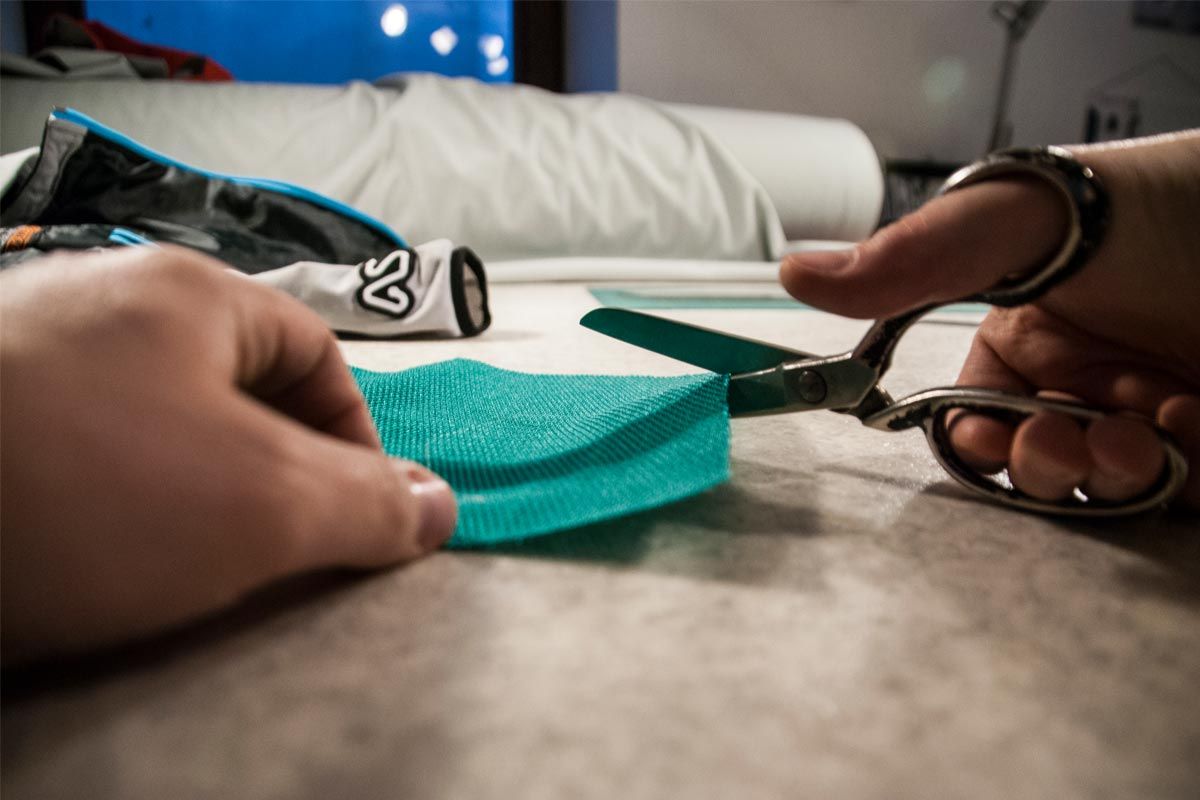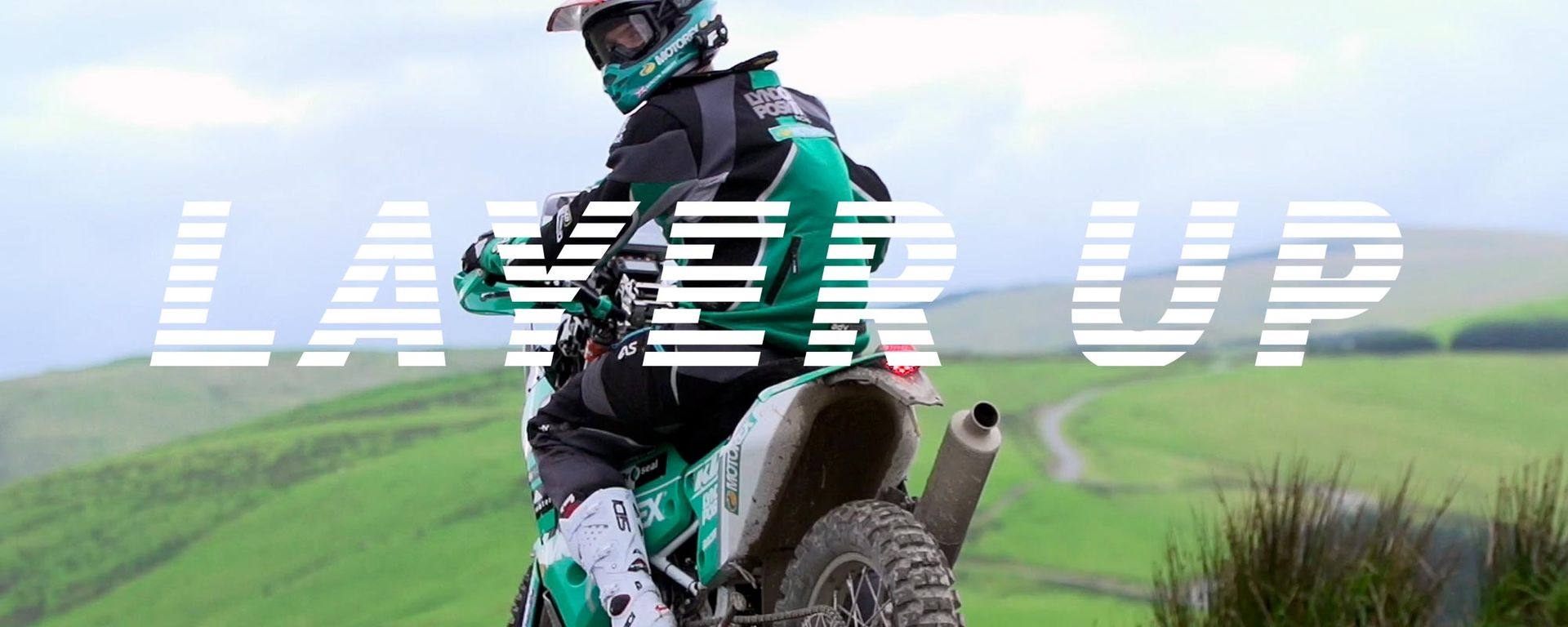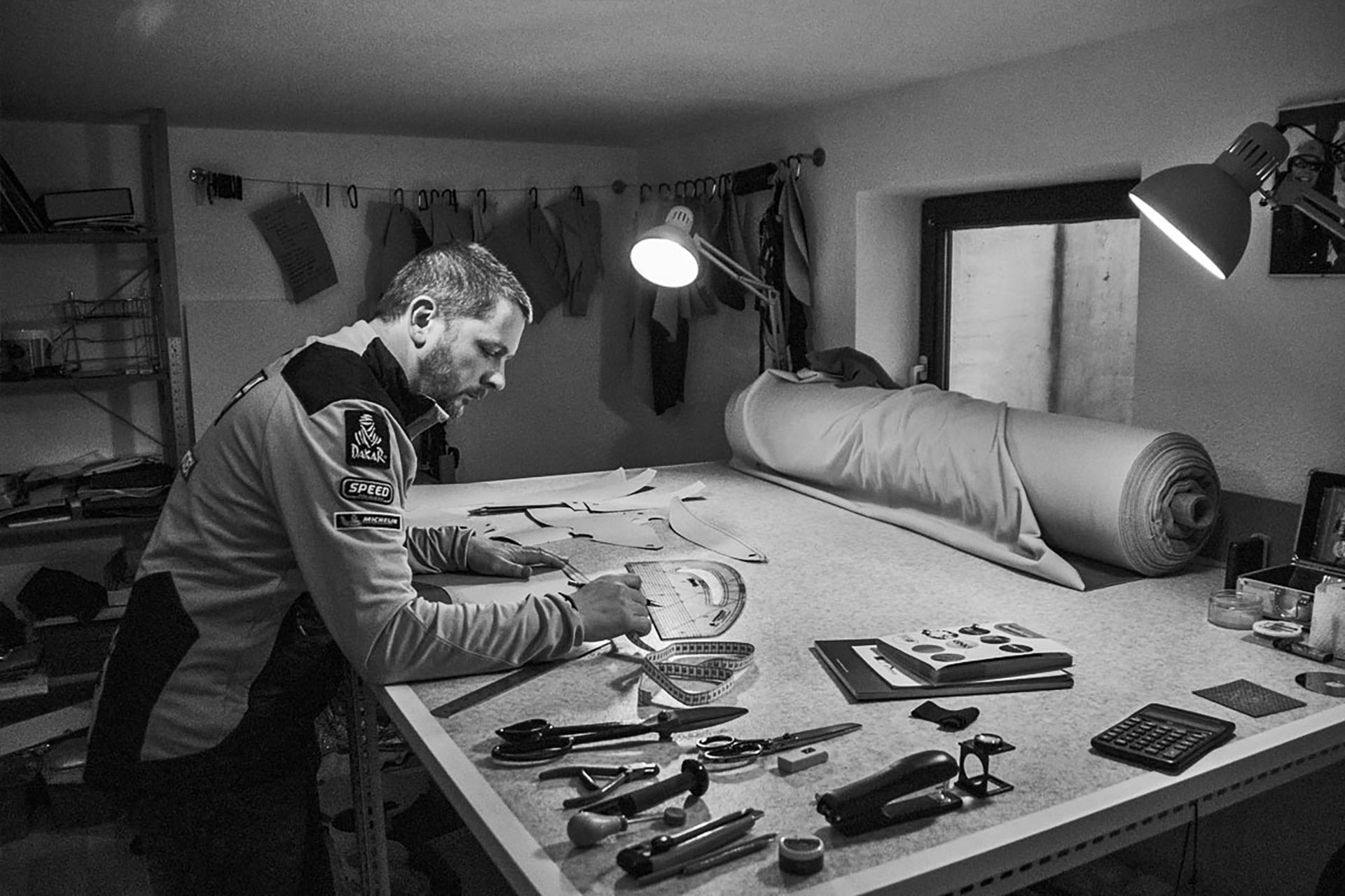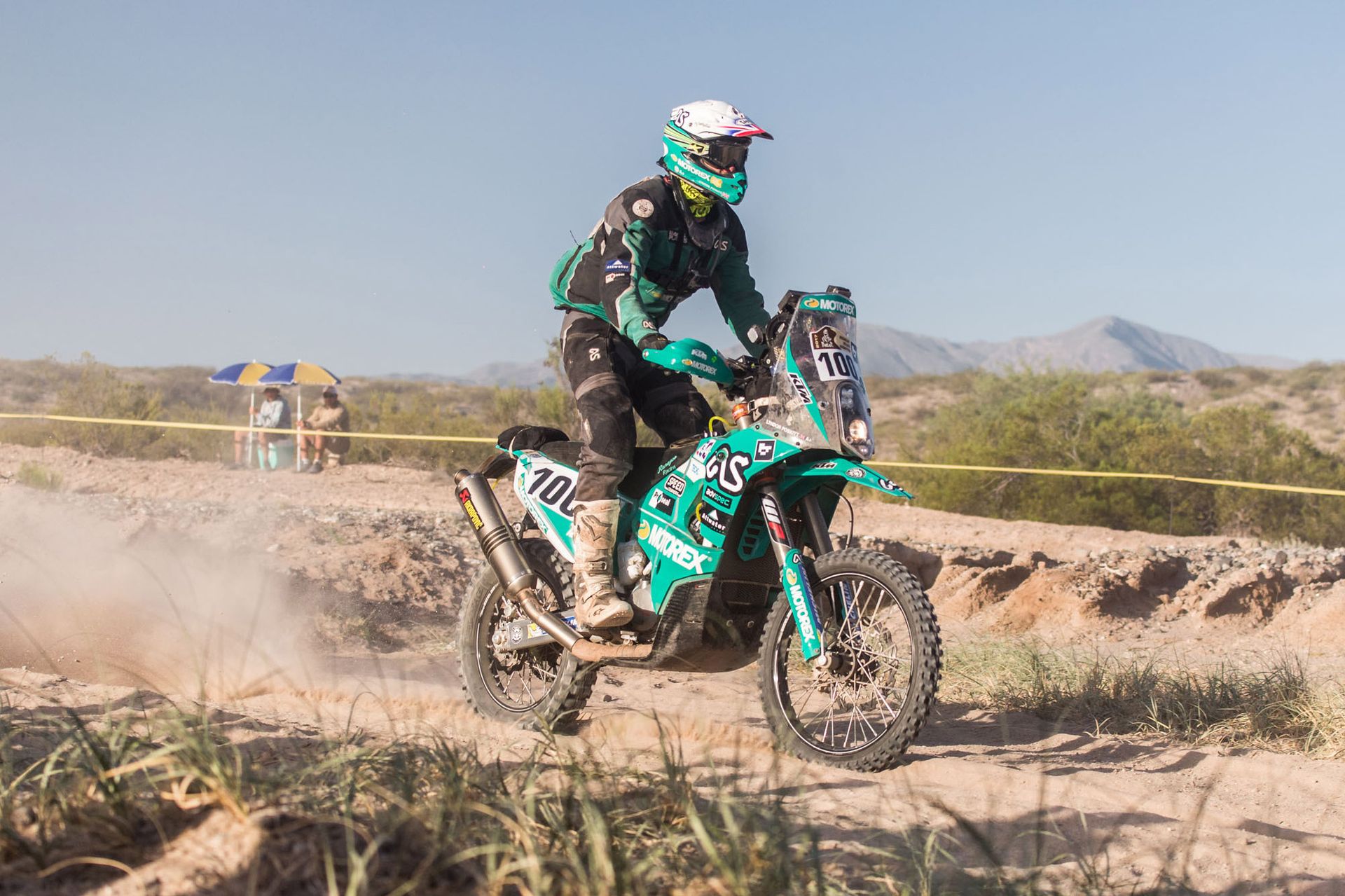When you watch Lyndon charging through the South American desert this January, the first thing you will notice is the man himself. Then probably the KTM 450 he's riding, hopefully very fast. If you look closer though, you may find yourself asking "What is that gear Lyndon's wearing? I've never seen that before?".
Well that would be the top secret Adventure Spec gear specially designed for the Dakar. Specialist technical clothing designer Euan Bruce opens the lid on how he's helping Lyndon stay warm, dry, cool and protected in the middle of the Dakar Rally 2017.
TRACKS:
Hi Euan. Thanks for taking time out to chat to us about Lyndon’s Race gear. You must be pretty excited about seeing it in Dakar. There’s something like 40million people that will see it on TV!
EUAN:
Thanks Greg, it’s great to be asked about the kit and to have it being ridden at the Dakar in the Malle Moto class is amazing, arguably the toughest way of doing this iconic race.
TRACKS:
Lets backtrack a bit. How did you end up working on this project?
EUAN:
I first met Chris Colling (co-founder of Adventure Spec) through a mutual friend about 10 years ago and helped design and develop the luggage that he used for his “Run from the Sun” project, an RTW trip from Vietnam overland through Russia to the UK.
After Chris’s trip we lost touch, I had moved up to Newcastle with my job and Chris was working on starting Adventure Spec with Dave Lomax, Then about 4 years ago Chris and Dave approached me to ask if I could help them develop some clothing for Lyndon Poskitt to wear as part of his ongoing Races To Places project. I said yes!
TRACKS:
It must be great working with Lyndon, someone who has literally been living off the back of his bike for the last 3 years. That must be a great opportunity for some really in depth user testing?
EUAN:
In my experience it’s rare for a professional athlete to be away on expedition for such long time, usually the expedition may last a few weeks to a month or two.
This means that we can actually test kit to destruction and whilst I would not say that Lyndon is unduly hard on his kit the constant use in harsh conditions does tend to highlight areas that need improving or fixing, it also means that the process of “test, refine, repeat” is easy to achieve as he is always on the road.
TRACKS:
I imagine it’s also a little challenging working with someone who has such high requirements of their gear? It mustn’t have all been plain sailing.
EUAN:
Having previously worked on kit for expeditions as diverse as first ascents in the Indian Himalaya to new routes on peaks in Antarctica and a world record attempt to run the length of the Himalayas, I think that Lyndon is very similar in his approach to other athletes. He is laser focussed on achieving his goals, he knows what he wants from his kit to enable him to achieve his targets.
This actually makes him easy to work with as he tends to give direct and honest feedback on what is working and what is not working.
The hardest part of the process is figuring out where to post stuff too!
TRACKS:
So, the Dakar race gear. Talk us through it…
EUAN:
Our start point for the Dakar race gear was comfort. That seems like an obvious statement, no one wants a suit that feels like it’s made from a peeled cactus skin, but comfort is a multi faceted subject and one of the areas where a large amount of research has been carried out is thermophysiological comfort, basically the study of heat, cold and moisture management, every time you seen an advert talking about the breathability of your clothing then you are looking at work into this aspect of human comfort
Layers of clothing that chafe a bit are annoying and we’ve all had blisters from boots or shoes that rub and whilst inconvenient, they are not usually life threatening. What can be life threatening, however, is an inability to protect the human body from the rigours of the climate; hypothermia and hyperthermia are very real considerations if you are pushing hard in inhospitable climates, whether that be cold or heat, and you are wearing a clothing system that is not designed for that climate.
This is why we are using a layering system in Lyndon’s race gear. He can add and remove layers in order to insulate or ventilate easily. One of the key conclusions that has come from our research is that rain should be kept at the outside of the race system as water is a far more effective conductor of heat than air and a wet garment will chill very quickly, particularly if you are moving at speed.
I think it would be fair to say that the Dakar is well organised with a strong consideration for rider safety but the competitors are racing in inhospitable conditions and so need the right kit to keep them functioning at their full potential, it is also worth remembering that another crucial aspect of managing how hot and cold you are and that is how your mental and physical agility is affected by those extremes of temperatures. How many of us have felt drowsy because we have the car heater set too high or how stiff your fingers can get when you are commuting in the cold weather, slowing down reaction times. Now imagine that affect at altitude through the Atacama Desert with reduced oxygen, riding technical off-road at speed and doing all that with too little sleep for 14 days? That is the reality for Lyndon at the Dakar.
The clothing system that Lyndon will be using is based around this layering principle...
Base Layer
Lyndon’s clothing system starts with his wicking base layers. The Dakar is physically challenging and so he will be sweating as he wrestles Rex through the various stages, so to avoid being chilled by having a damp T-shirt on, he will be wearing a wicking base layer made from Nylon and Polyester. These fibres will wick the moisture away from his skin and help it to evaporate out of the clothing layers. The other benefit is that because the base layers remain drier than a cotton T in similar circumstances the base layers don’t stick to the skin meaning he retains good freedom of movement.
The base layer that Lyndon is using will also have body armour built into it, this keeps the armour close to him meaning that when he changes his outermost layers to accommodate changes in weather then his armour is always on him.
We have also worked to develop a surface finish using silver ions to help stop the smell of prolonged expedition.
Mid Layer
The next layer out is the mid layer(s), these are usually worn to provide insulation from the cold. Lyndon will have our Hybrid with him. This mid layer uses Thermore Thermal Booster insulation and is designed to accommodate his body armour comfortably.
Lyndon will also have an insulated jacket with him that has thicker insulation than the Hybrid so that if it gets really cold then he can keep going in comfort.
Protection Layer
Lyndon’s Protection Layer is green Motorex branded jacket, this is made from 2 main fabrics. The green material is a Nylon 6.6 mesh (a super strong type of Nylon) and this is warp knitted into a military grade anti snag mesh. It is super strong and highly ventilated making it ideal for the hot sections of the Dakar or riding in any hot weather.
The other fabric that is on the jacket is a woven Nylon fabric with integrated Dyneema thread that has a super high strength to weight ratio. This is used to cover the elbows, shoulder & hips to increase the abrasion resistance of the jacket.
Waterproof Layer
Whilst the protection layer is great for ventilation it is not so good in wet and windy weather, this is where Lyndon’s shell jacket comes in. He will be wearing a jacket that is made from a 3 layer waterproof breathable fabric. This purpose of this jacket is to keep the rain, wind and water out of the garment system.
Keeping water out of your clothing system has many benefits, it keeps the weight down, it keeps you warmer, you don’t have to put on cold & damp clothing the next day and keeps you more comfortable.
Trousers
Lyndon will also be wearing Moto-X style trousers that are designed to fit over a knee brace, have large ventilation zips and use a waterproof breathable fabric as the main fabric, this helps keep puddle splashes out as they are shower resistant.
As well as the venting zips the trousers also have large thigh pockets and loads of stretch fabric around the knees to help with freedom of movement.
The trousers also feature knee panels that are made from a Kevlar fabric covered in Hypalon rubber to provide heat resistance in the event you touch against the exhaust, the fabric is grippy so you can grip the tank with your knees. It is soft and flexible to give good freedom of movement and it is washable. We use this in place of leather, which is great in most ways mentions above except leather doesn’t tend to react well to repeated washings.
TRACKS:
Lyndon is one lucky guy, I don’t know how many other riders will have this much attention devoted to their clothing! What happens after the race is over? Is that the end of the project?
EUAN:
No it’s not the end. We are in a constant cycle of development on this gear and we have plans for the future. Keep an eye on our Facebook to see how it develops.
YOU CAN RIDE IN THIS DAKAR GEAR
Lyndon's Dakar gear was the prototype for our Atacama Race range of clothing. You can ride in exactly the same Dakar spec gear right now!



